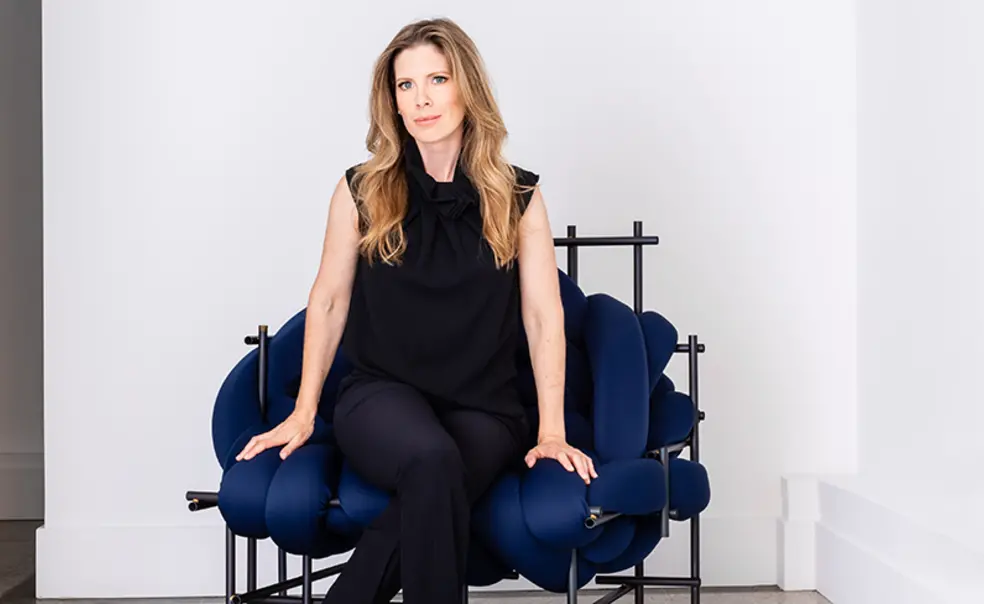Amanda Pratt ’01 Is Elevating Women Artists and Designers at Her NYC Gallery
‘I noticed that there weren’t a lot of opportunities for women, and that women were not being represented in a meaningful way,’ Pratt says
In her early career after graduation, Amanda Pratt ’01 had a hard time finding her voice.
“I think one of the wonderful things about Princeton is that you go and it teaches you to have a voice,” Pratt says, but there was a downside: “I think it didn’t prepare me in the real world for my voice to be unheard in such a material way.”
While working as one of the only women on her team in investment banking and then in a medical lab, she says that she found her male colleagues were often given preferential treatment. She felt discouraged. So when she was approached to become the CFO and CEO of a shoe and handbag company while she was living in Hong Kong, she jumped at the opportunity. From there, she decided to become an interior architect and start her own design practice.
“I noticed that there weren’t a lot of opportunities for women, and that women were not being represented in a meaningful way, and so that was part of the impetus to start my gallery,” Pratt says. “That’s when I started thinking about creating a platform where we would really intentionally feature the voices of women for their art and design practices.”
She founded the contemporary design gallery Salon Design in 2018 when she moved back to New York City and has since rebranded as AM Collective. The studio represents makers from around the world — 80% of whom are women — who practice “heritage craft techniques” that are also “ecologically sound.”
Pratt initially opened her gallery in ground-floor white box retail spaces, but she didn’t really feel comfortable in them because it was hard to evoke a “sense of home.” After a search, she found a 2,600-square-foot townhouse in the West Village — now dubbed “Villa AM” — which can display seasonal collections throughout the year.
The townhouse setting also allows Pratt to show how the pieces actually function in a home, like metal chairs “that look very uncomfortable but they’re not,” or “crazy” screens that are hand-marbled and hand-patinated. “People don’t necessarily know how you incorporate that into an interior,” she says.
“I wanted to create a space where the work almost represents itself,” Pratt says. “There’s a feeling of comfort that comes with being in a space like this that really pulls people in, and that’s part of the concept: How do we view home, and what do we want from it? If we’re able to do that as a gallery, I think we’re doing something really interesting.”
Villa AM, which opened its doors in April, also hosts a slate of programming for buyers, collaborators, and designers both in the house and in the backyard garden.
The entire platform has not only given Pratt the opportunity to showcase work that is empowering the voices of female makers around the world, but also to reclaim her own voice and show that it’s an important voice in the world of collectible design.
“I want to be somebody who has a very thoughtful curatorial perspective, but also has gone out and tried to create a relevant space for these historical practices,” Pratt says. “I think that continuing to put together shows that represent a broad collection of voices is just incredibly important right now in where we are as a society.”












No responses yet